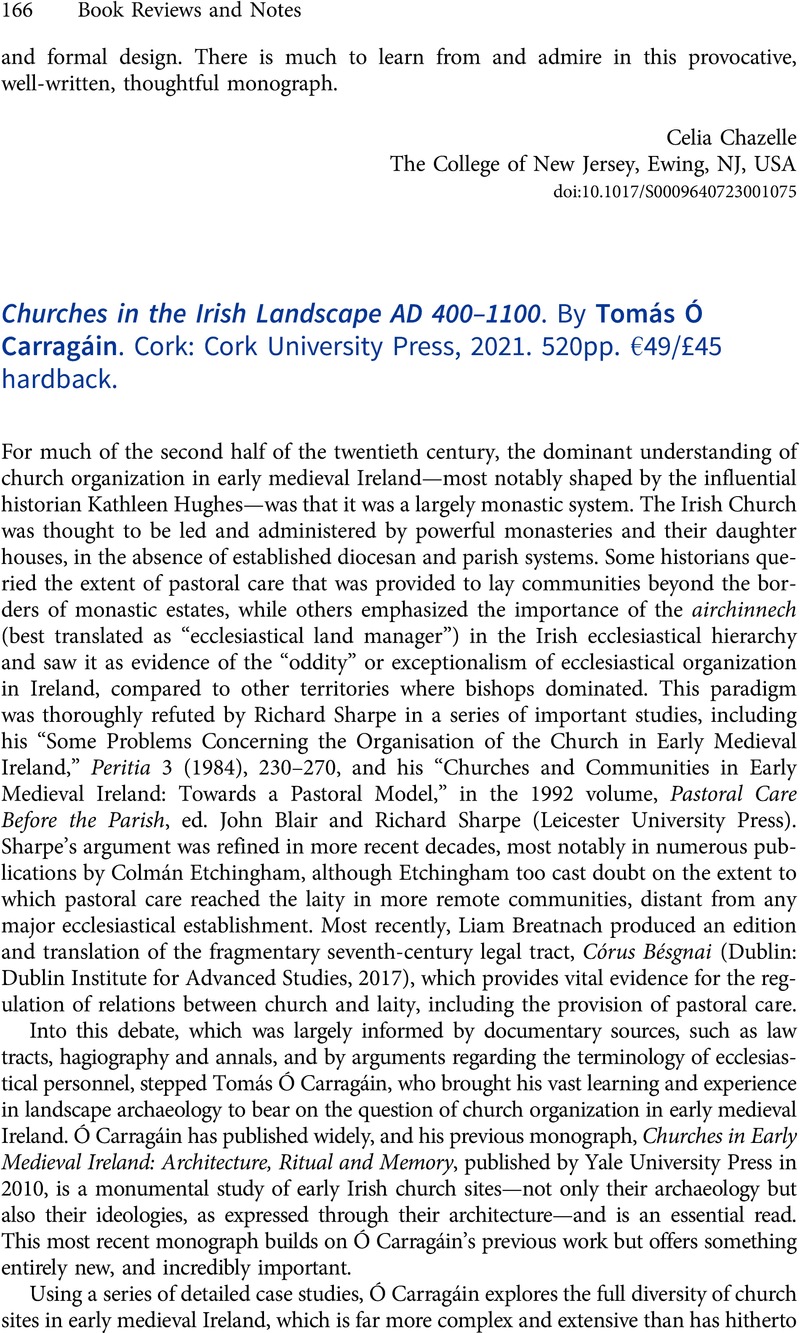No CrossRef data available.
Article contents
Churches in the Irish Landscape AD 400–1100. By Tomás Ó Carragáin. Cork: Cork University Press, 2021. 520pp. €49/£45 hardback.
Review products
Churches in the Irish Landscape AD 400–1100. By Tomás Ó Carragáin. Cork: Cork University Press, 2021. 520pp. €49/£45 hardback.
Published online by Cambridge University Press: 28 July 2023
Abstract
An abstract is not available for this content so a preview has been provided. Please use the Get access link above for information on how to access this content.

Information
- Type
- Book Reviews and Notes
- Information
- Copyright
- Copyright © The Author(s), 2023. Published by Cambridge University Press on behalf of American Society of Church History

